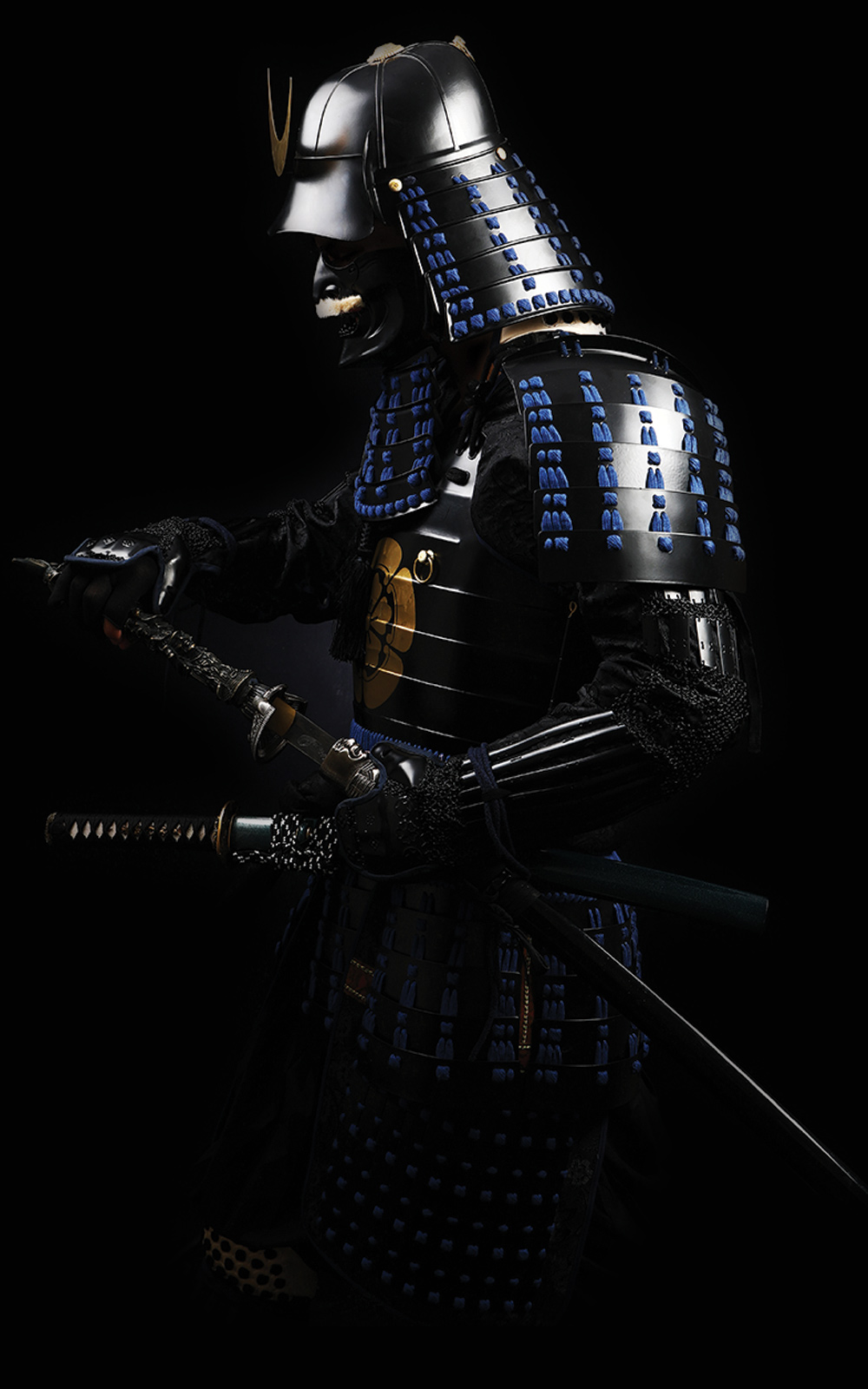
The most iconic and well known of all the Samurai swords; the katana is distinguished by its long blade and handle that is made to accommodate two hands and strike from a large distance. It has a curved, slender, single-edged blade with a circular or squared guard. The katana has a set of dimensions that separate it from other samurai swords. A traditional katana will measure 3 to 4 feet in total length, with the hilt taking up one-fourth of the total and a characteristic curvature of more or less than 1 inch.
The wakizashi is similar to the katana but shorter in length. The average Wakizashi is about 50 cm long and was usually worn together with the katana by the Samurai of feudal Japan. When worn together the pair of swords was called Daish, which translates to large and small. This sword acted like a side weapon and was worn by the Samurai at all times.
The Tanto, although not technically qualifying in the category of swords, is the traditional Japanese dagger. It can have a single or double edge. It acts like a wakizashi and is worn at all times. The main purpose of a tanto is to be used as a stabbing instrument but having a pretty sharp edge, it can be used to slice and cut. The Tanto has become more ornate over the years and towards the end of the Samurai era, they were mostly used as decorative pieces, and still are mostly used in decorations to this date.
For most of the orders, our processing time is 1-2 business days.
For some high-performance swords may require longer handmade processing time, depending on the difficulty of the craft.
Once you place an order with us, we send an confirmation email to your email. If you do not receive it, it may went to your spam folder. Please check it, thank you.
We ship to Hawaii only, we do not ship to Puerto Rico and other US Territories.
Once we shipped out your order, you should be received it within 3-15 business days depend on your destination.
The first thing that needs to be taken into consideration is display versus functional. Are you looking for a sword to practice or just as a decorative item to wear or display? Once you decide to what purpose you will be using your sword, then, take a look at the different variety of designs and ornamentation that can be found and choose the one that fits your personality, style and budget.
The purpose of using oil to maintain the blade is to form an oil film on the surface of the blade to isolate the oxygen in the air and prevent the daily storage from oxidizing and rusting the blade.
This situation will be happen if the first order we ship and lost, so we will ship a replacement and inform you the new tracking number.
We have a full range of Japanese style Samurai katana swords and Chinese swords. We are more than 1000+ swords available for our customers. We have been offering high quality Japanese Style Katana, Wakizashi, tanto internationally with wholesale and retail price. All the swords are fully handmade and functional.
Yes, we will send a replacement sword to you in this case.
For more detail regarding your replacement, please see the return policy here: https://www.truekatana.com/pages/return-policy
Yes, the buyer is responsible for paying the additional costs such as duties, taxes, and customs clearance fees.
For more details, please see https://www.truekatana.com/pages/customs-information-and-customs-charges.
Welcome to TrueKatana, a California-based local business specializing in the highest quality katana, ninja swords, wakizashi, tanto swords, and other bladed weapons. We take pride in our extensive collection of swords, which includes everything from traditional Japanese katana to modern-day tactical knives and everything in between.
At TrueKatana, we believe that every sword should be a masterpiece, and that's why we only offer swords that are crafted with the utmost care and precision. Whether you're a collector looking to add to your collection, a martial artist looking for a reliable training weapon, or just someone who loves the artistry of swords, we've got you covered. Our swords are made by skilled artisans using traditional techniques and the finest materials, ensuring that each blade is a work of art in its own right.
At TrueKatana, we believe that everyone should have access to high-quality swords at reasonable prices. That's why we offer a satisfaction guarantee on all of our products, as well as free shipping on all orders.
In addition to our standard collection of swords, we also offer customization options that allow you to design your own sword to your exact specifications. Whether you're looking for a unique handle design or a specific type of blade, we can help you create the sword of your dreams.
Thank you for choosing TrueKatana.com as your go-to source for swords and blades. We're excited to help you find the perfect sword for your needs and look forward to serving you for years to come.
